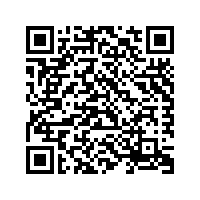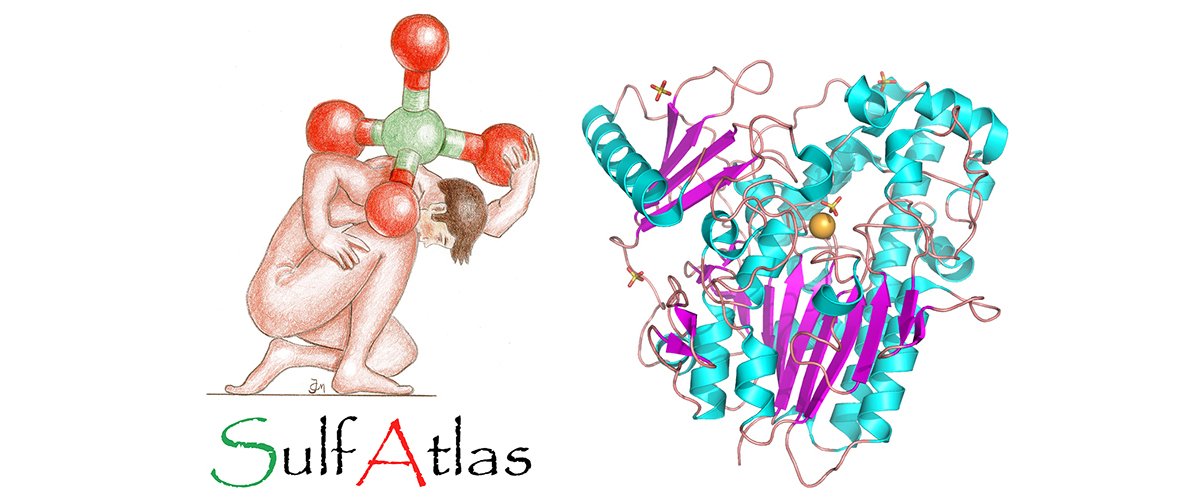


SulfAtlas, a general classification database for sulfatases
Sulfated biomolecules are widespread in Nature and highly diverse in chemical structure and biological function. For instance steroid sulfate, cerebroside sulfate or heparin play vital roles in human and animals. Plants produce numerous sulfated secondary metabolites acting as defense or communication molecules. Sulfated biomolecules are also ubiquitous in marine environment. Indeed all marine animals, plants and algae synthesize sulfated polysaccharides as major compounds of their extracellular matrix.
Sulfatases catalyze the cleavage of sulfate groups from such molecules and are thus essential enzymes in the biomedical field, but also in general biology, in environmental processes and in biotechnology. These proteins have been essentially studied in the context of severe genetic diseases in human and the number of characterized sulfatases is thus limited in comparison to the huge diversity of sulfated compounds. In the context of the explosion of genomic data, the prediction of the function of new sulfatases is therefore particularly prone to misinterpretations. A classification system allowing a better prediction of substrate specificity and for setting the limit of functional annotations is therefore urgently needed for sulfatases.
To answer this issue the Marine Glycobiology group, in close collaboration with the bioinformatics platform ABIMS, has created a general database, SulfAtlas, to classify all available sulfatases based on sequence homology. The details of this collaborative work has been published in the journal PLOS One the 17th of October 2016 ( http://journals.plos.org/plosone/article?id=10.1371/journal.pone.0164846). The SulfAtlas database will be regularly updated and is in free access at the following address: http://abims.sb-roscoff.fr/sulfatlas/.
Reference: Tristan BARBEYRON, Loraine BRILLET-GUÉGUEN, Wilfrid CARRÉ, Cathelène CARRIÈRE, Christophe CARON, Mirjam CZJZEK, Mark HOEBEKE and Gurvan MICHEL. (2016) Matching the diversity of sulfated biomolecules: creation of a classification database for sulfatases reflecting their substrate specificity (2016) PLOS One, 11:e0164846
Les biomolécules sulfatés sont omniprésentes dans la nature et sont extrêmement diverses en structure chimique et en fonction biologique. Par exemple les stéroïdes sulfates, les cérébrosides sulfates ou l’héparine ont des rôles vitaux chez l’homme et les animaux. Les plantes terrestres produisent de nombreux métabolites secondaires sulfatés qui agissent comme des molécules de défenses ou des signaux de communication. Les biomolécules sulfatés sont également ubiquitaires dans l’environnement marin, puisque tous les animaux marins, les plantes marine et les algues synthétisent des polysaccharides sulfatés comme composants majeurs de leur matrice extracellulaire.
Les sulfatases catalysent le clivage des groupements sulfates de tels composés et sont donc des enzymes essentielles dans le domaine biomédical, mais également en biologie, dans les processus environnementaux et en biotechnologie. Ces protéines ont été jusqu’à présent surtout étudiées dans le cas de sévères maladies génétiques chez l’homme et le nombre de sulfatases caractérisées est très limité en comparaison de la diversité des biomolécules sulfatés. Dans le contexte de l’explosion des données génomiques, la prédiction de la fonction des nouvelles sulfatases est donc actuellement sujette à nombreuses erreurs. Un système de classification permettant de mieux prédire la spécificité de substrat des sulfatases est donc urgemment requis.
Pour répondre à ce problème, l’équipe Glycobiologie Marine, en étroite collaboration avec la plateforme bioinformatique ABIMS, a créé une base de données, SulfAtlas, qui classifie toutes les sulfatases disponibles sur la base de l’homologie de séquence. Le détail de ce travail collaboratif a été publié le 17 octobre 2016 dans le journal PLOS One (lien). La base de données SulfAtlas sera régulièrement mise à jour et est librement disponible à l’adresse suivante : http://abims.sb-roscoff.fr/sulfatlas/.
Référence : Tristan BARBEYRON, Loraine BRILLET-GUÉGUEN, Wilfrid CARRÉ, Cathelène CARRIÈRE, Christophe CARON, Mirjam CZJZEK, Mark HOEBEKE and Gurvan MICHEL. (2016) Matching the diversity of sulfated biomolecules: creation of a classification database for sulfatases reflecting their substrate specificity (2016) PLOS One, in the press.
Links
[1] http://abims.sb-roscoff.fr/sulfatlas/
[2] http://abims.sb-roscoff.fr/sulfatlas/.
[3] http://journals.plos.org/plosone/article?id=10.1371/journal.pone.0164846